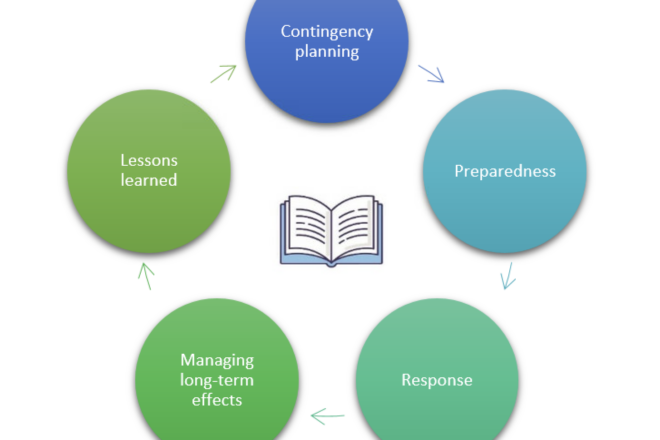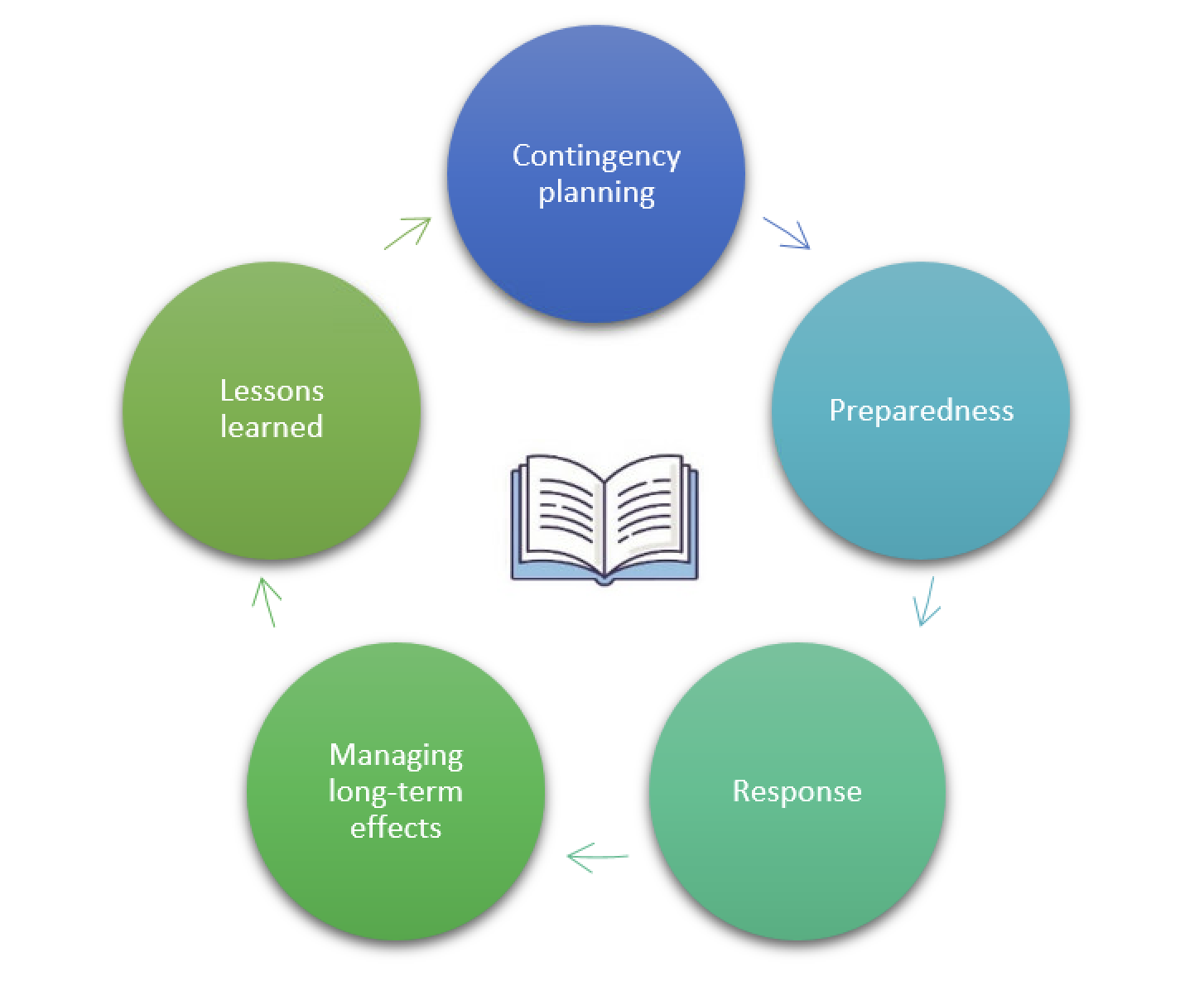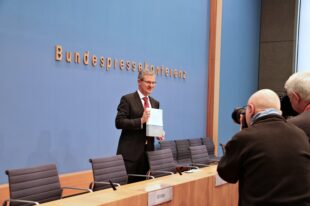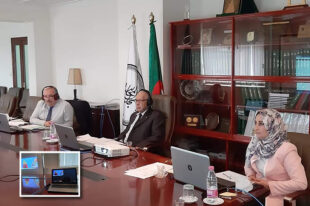Addressing the Lack of Access, Infrastructure, and Teacher Trainings for Distance Learning in General Education after COVID-19: Recommendations from SAI Georgia

Author: Ms. Mariam Zaalishvili, Deputy Head of the Social Sphere Audit Department, State Audit Office of Georgia
A state of emergency was declared in Georgia in 2020 as the COVID-19 pandemic posed new challenges, including to the quality of general education as classroom learning was replaced with virtual, distance learning for 97% of students at public schools. This situation created certain losses in education, raising a public need for the performance audit of distance learning for the State Audit Office of Georgia (SAOG) with respective audit findings and recommendations with the involvement of the US Government Accountability Office’s Center for Audit Excellence experts.
Findings
The SAOG identified six key findings in the performance audit of distance learning in Georgia:

Source: State Audit Office of Georgia
- Lack of IT Resources for Students: The Ministry lacked appropriate IT resources for students, and did not know the exact number of students lacking IT resources.
- Inefficient Utilization of Resources: The risk occurred for an inefficient utilization of resources, as the online meeting system Teams licenses were not fully used in 2020 with 42% among students and 10% among teachers. The licenses are therefore recommended to be procured needs based with an appropriate monitoring process.
- Additional Needs for Technology Training for Teachers: From 2017-2021, the SAOG found that only 42% of public school teachers had participated in the technology related trainings.
- Insufficient Coverage of the National Education Plan through “Teleschool”: With the onset of the COVID-19 pandemic, the Ministry of Education created an electronic platform with virtual classrooms for all public schools. For students who did not have access to the resources needed to participate in distance learning, the Ministry launched their TV school project “Teleschool”. However, this project turned out to be challenging since it did not fully cover the national education plan, and the project authorities did not have viewing statistics.
- Lack of an Action Plan for Education Emergency Preparedness: The Ministry and its units lacked an action plan for emergency mitigation of damage to the public education system.
- Shortage of Teachers in Rural Areas: The SAOG found that the existing education programme for highland population experienced a shortage of 309 teachers in rural areas between 2018-2021, which affected 15,000 students that distance learning should be targeting. This was a pre-pandemic challenge that had exacerbated effects in the pandemic.
Key Conclusions
Fig 1: Five-Stage Systemic Response

Source: State Audit Office of Georgia
Having evaluated the emergency preparedness, and assessed the efficiency and effectiveness of the measures to provide distance learning during the pandemic, the SAOG report identified the possibility of using this acquired experience in the future. The key conclusions were drawn on every response stage, followed by potential for improvement on which the SAOG issued the relevant recommendations:
- For virtual distance learning, access to adequate resources for students remains a challenge. The Ministry of Education does not have complete and reliable information on the number of students who do not have access to the resources needed for distance learning. Existence of reliable information makes it possible to identify vulnerable groups and increase their access to distance learning. The SAOG recommends that the Ministry of Education and Science of Georgia identify the number of students lacking access to distant learning technology infrastructure, and identify ways to improve their respective access.
- It is also important to determine the adequate number of computer licenses to be purchased, and to collect detailed information on the usage of licenses facilitating efficient use of resources. The licenses are therefore recommended to be procured through a needs-based determination with an appropriate monitoring process.
- Additionally, 42% of teachers employed at public schools were not involved in any of technology related trainings, which hinders the proper conduct of distance learning. Assessing the specific needs of teachers in computer skills and providing trainings to them according to the specific areas will improve the distance learning process. The SAOG recommends that the LEPL National Center for Teachers Professional Development within the Ministry identify IT needs among the teachers and facilitate their trainings.
- As the response measure, the “Teleschool” project used as one of the forms of distance learning did not fully cover the compulsory subjects defined by the National curriculum, ensuring countrywide access to general education. It is important for the virtual education TV lessons to fully cover compulsory subjects. The SAOG recommends that the Ministry improves the “Teleschool” to cover the national education plan and study its audience.
- As part of lessons learned for the future, the Ministry should come up with a plan for emergency situations, which outlines the risks, its impact and measures to ensure the access and sustainability of education. The 5th recommendation the SAOG made to the Ministry is to improve emergency preparedness needs by devising an education contingency plan for arising circumstances.
- Last but not least, a number of students in the rural areas, due to the shortage of teachers, do not have an adequate access to general education existing even before the pandemic. During the COVID-19 state of emergency, the challenge turned more critical. Since the education system gained greater experience with developing and employing the distance learning process in the pandemic, SAOG recommends that the Ministry should use this opportunity to solve the pre-pandemic condition of the shortage of teachers. At schools with a shortage of teachers in a particular subject or qualified staff, it should be possible to offer distance learning in subjects where classroom education is not available or possible.
The U.S. Government Accountability Office’s leading practices and experience was the subject of benchmarking in this regard for assessing the crisis response measures, preparedness, and reflection for better governance to increase program efficiency and effectiveness, as the Center for Audit Excellence experts supported the audit process with the approaches and methodologies, as well as assisted in enhancing the audit impact.
The audit findings and recommendations were made to the Ministry of Education with the Parliamentary Standing Group on Reports of the State Audit Office. The Ministry representatives agreed on the findings and recommendations that the SAOG presented. SAOG will further follow-up with the implementation of the recommendations in the Audit Recommendation Implementation System (ARIS) innovative platform, which will monitor the follow up process. Based on the SAOG recommendations, the Ministry has prepared an action plan which improves the effectiveness and efficiency of the distance learning processes, and increases access to the education.
Assessment of the long-term effects of the pandemic and the potential impact of distance learning on the education system will allow Georgia to understand the full outcomes of the pandemic, and plan for appropriate response measures. The experience gained in distance learning in the public education system during the pandemic can be used in the future to ensure full and universal access to general education.
For more information please contact SAOG at iroffice@sao.ge





